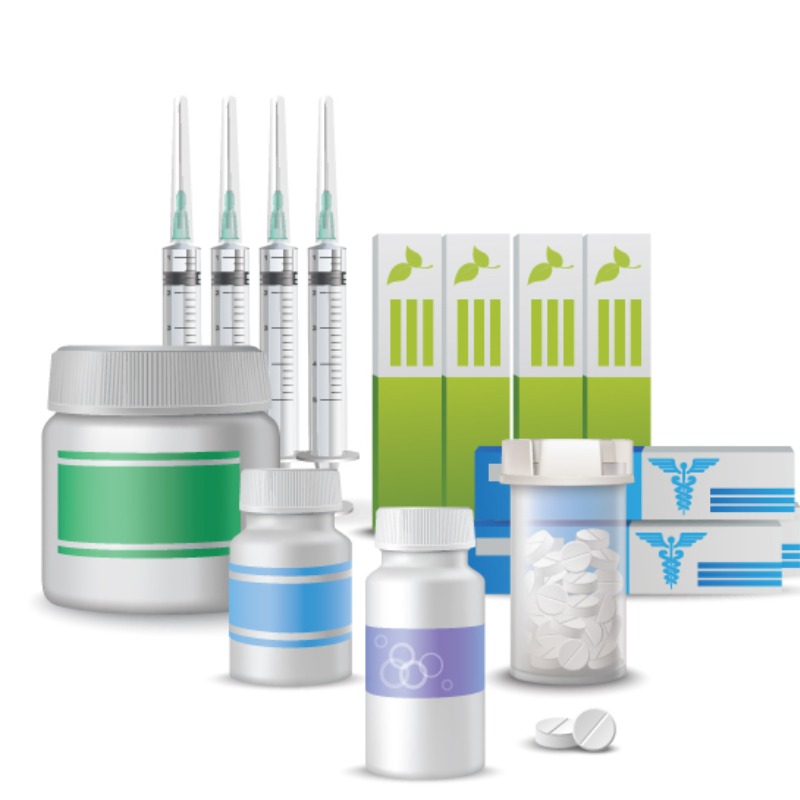Bevacizumab
CLASSIFICATION Monoclonal antibody
DISTRIBUTION
Distribution in body is not well characterized. The predicted time to reach steady-state levels is on the order of 100 days.
INDICATIONS
1. Metastatic colorectal cancer—FDA-approved for use in combination with any intravenous 5-fluorouracil (5-FU)–based chemotherapy in first-line therapy.
2. Metastatic colorectal cancer—FDA-approved for use in the second-line setting in combination with fluoropyrimidine-based chemotherapy after progression on first-line treatment that includes bevacizumab.
3. NSCLC—FDA-approved for non-squamous NSCLC in combination with carboplatin/paclitaxel.
4. Glioblastoma—FDA-approved as a single agent for glioblastoma with progressive disease following prior therapy.
5. Renal cell cancer—FDA-approved in combination with interferon-α for metastatic renal cell cancer.
6. Cervical cancer—FDA-approved in combination with cisplatin/paclitaxel or paclitaxel/topotecan for persistent, recurrent, or metastatic cervical cancer.
7. Ovarian, fallopian tube, or primary peritoneal cancer—FDA-approved in combination with paclitaxel, pegylated liposomal doxorubicin, or topotecan for platinum-resistant recurrent disease.
8. Ovarian, fallopian tube, or primary peritoneal cancer—FDA-approved in combination with carboplatin and paclitaxel or carboplatin
and gemcitabine, followed by bevacizumab as a single agent, for platinum-sensitive recurrent disease.
9. Ovarian, fallopian tube, or primary peritoneal cancer—FDA-approved in combination with carboplatin and paclitaxel followed by bevacizumab as a single agent for stage III or IV disease following initial surgical resection.
DOSAGE RANGE
1. Recommended dose for the first-line treatment of advanced colorectal cancer is 5 mg/kg IV in combination with intravenous 5-FU–based chemotherapy on an every-2-week schedule.
2. Recommended dose for the second-line treatment of advanced colorectal cancer in combination with FOLFOX-4 is 10 mg/kg IV on an every-2-week schedule.
3. Can also be administered at 7.5 mg/kg IV every 3 weeks when used in combination with capecitabine-based regimens for advanced colorectal cancer.
4. Recommended dose for advanced NSCLC is 15 mg/kg IV every 3 weeks with carboplatin/paclitaxel.
5. Recommended dose for glioblastoma is 10 mg/kg IV every 2 weeks.
6. Recommended dose for renal cell cancer is 10 mg/kg IV every 2 weeks with interferon-a.
7. Recommended dose for cervical cancer is 15 mg/kg every 3 weeks with cisplatin/paclitaxel or paclitaxel/topotecan.
8. Recommended dose for platinum-resistant ovarian, fallopian tube, or primary peritoneal cancer is 10 mg/kg every 2 weeks with paclitaxel, pegylated liposomal doxorubicin, or weekly topotecan or 15 mg/kg every 3 weeks with topotecan given every 3 weeks.
9. Recommended dose for platinum-sensitive ovarian, fallopian tube, or primary peritoneal cancer is 15 mg/kg every 3 weeks with carboplatin and paclitaxel for 6–8 cycles, followed by 15 mg/kg every 3 weeks as a single agent or 15 mg/kg every 3 weeks with carboplatin and gemcitabine for 6–10 cycles, followed by 15 mg/kg every 3 weeks as a single agent.
10. Recommended dose for stage III or IV ovarian, fallopian tube, or primary peritoneal cancer following initial surgical resection is 15 mg/kg every
3 weeks with carboplatin and paclitaxel for up to 6 cycles, followed by 15 mg/kg every 3 weeks as a single agent for a total of up to 22 cycles.
DRUG INTERACTIONS
None well characterized to date.
SPECIAL CONSIDERATIONS
1.Patients should be warned of the increased risk of arterial thromboembolic events, including myocardial infarction and stroke. Risk factors are age
≥65 years and history of angina, stroke, and prior arterial thromboembolic events. This represents a black-box warning.
2. Patients should be warned of the potential for serious and, in some cases, fatal hemorrhage resulting from hemoptysis in patients with NSCLC. These events have been mainly observed in patients with a central, cavitary, and/ or necrotic lesion involving the pulmonary vasculature and have occurred suddenly. Patients with recent hemoptysis (≥1/2 tsp of red blood) should not receive bevacizumab. This represents a black-box warning.
3. Bevacizumab treatment can result in the development of GI perforations, which in some cases has resulted in death. This event represents a black- box warning. Use with caution in patients who have undergone recent surgical and/or invasive procedures. Bevacizumab should be given at least 28 days after any surgical and/or invasive intervention.
4. Bevacizumab treatment can result in the development of wound dehiscence, which in some cases can be fatal. This represents a black-box warning. Use with caution in patients who have undergone
recent surgical and/or invasive procedures. Bevacizumab should be given at least 28 days after any surgical and/or invasive intervention.
5. Carefully monitor for infusion-related symptoms. May need to treat with diphenhydramine and acetaminophen.
6. Use with caution in patients with uncontrolled hypertension, as bevacizumab can result in grade 3 hypertension in about 10% of patients. Should be permanently discontinued in patients who develop hypertensive crisis. In most cases, however, hypertension is easily managed by increasing the dose of the antihypertensive medication and/or with the addition of another antihypertensive medication.
7. Bevacizumab should be terminated in patients who develop the nephrotic syndrome. Therapy should be interrupted for proteinuria
≥2 grams/24 hours and resumed when < 2 grams/24 hours.
8. Bevacizumab treatment can result in reversible posterior leukoencephalopathy syndrome (RPLS), as manifested by headache, seizure, lethargy, confusion, blindness and other visual side effects, as well as other neurologic disturbances. This syndrome can occur from 16 hours to 1 year after initiation of therapy and usually resolves or improves within days, and magnetic resonance imaging is necessary to confirm the diagnosis.
9. There are no recommended dose reductions for bevacizumab. In the setting of adverse events, bevacizumab should be discontinued or temporarily interrupted.
10. Pregnancy category B.
TOXICITY 1
Gastrointestinal perforations and wound-healing complications.
TOXICITY 2
Bleeding complications, with epistaxis being most commonly observed. Serious, life-threatening pulmonary hemorrhage occurs in rare cases in patients with NSCLC, as outlined previously in Special Considerations.
TOXICITY 3
Increased risk of arterial thromboembolic events, including myocardial infarction, angina, and stroke. There is also an increased incidence of venous thromboembolic events.
TOXICITY 4
Hypertension occurs in 5%–18%. Usually well controlled with oral antihypertensive medication.
TOXICITY 5
Proteinuria with nephrotic syndrome < 1%.
TOXICITY 6
Infusion-related symptoms with fever, chills, urticaria, flushing, fatigue, headache, bronchospasm, dyspnea, angioedema, and hypotension. Infusion reactions occur in < 3% of patients, and severe reactions occur in 0.2% of patients.
TOXICITY 7
CNS events with dizziness and depression. RPLS occurs rarely (incidence of
< 0.1%) and presents with headache, seizure, lethargy, confusion, blindness, and other visual disturbances.


Login To Comment